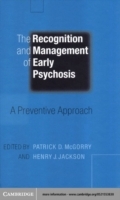Detailansicht
How to Influence Anyone, Anywhere, Every Time
eBook - The Art and Science of Communication at Work
ISBN/EAN: 9781394248667
Umbreit-Nr.: 3508007
Sprache:
Englisch
Umfang: 320 S., 14.51 MB
Format in cm:
Einband:
Keine Angabe
Erschienen am 25.04.2024
Auflage: 1/2024
E-Book
Format: EPUB
DRM: Adobe DRM
- Zusatztext
- The treatment of early psychosis has been bedevilled by an entrenched pessimism, stemming from the asylum era and the Kraepelinian model of schizophrenia. More recently, however, there has been a surge of interest in preventively oriented treatment of patients showing the first signs of psychotic illness, with the realization that these illnesses are frequently highly responsive to early treatment. This is the first text to focus on the potential of early detection of psychosis, and the practicalities of treatment. Based on the pioneering experience and research of a now well-established prevention and intervention centre, and with contributions from international authorities, the book outlines a framework for intervention, reviews the evidence available to guide clinical practice, and describes models of treatment. Incorporating many personal narratives and case histories, it is strong on theory, sensitive on practical issues, and will challenge, inform and guide clinicians.
- Kurztext
- The treatment of early psychosis has been bedevilled by an entrenched pessimism, stemming from the asylum era and the Kraepelinian model of schizophrenia. More recently, however, there has been a surge of interest in preventively oriented treatment of patients showing the first signs of psychotic illness, with the realization that these illnesses are frequently highly responsive to early treatment. This is the first text to focus on the potential of early detection of psychosis, and the practicalities of treatment. Based on the pioneering experience and research of a now well-established prevention and intervention centre, and with contributions from international authorities, the book outlines a framework for intervention, reviews the evidence available to guide clinical practice, and describes models of treatment. Incorporating many personal narratives and case histories, it is strong on theory, sensitive on practical issues, and will challenge, inform and guide clinicians.
